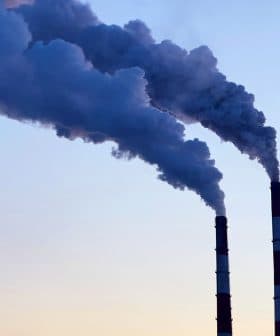Greenhouse Gas Emissions Hit Record Highs in 2021
The World Meteorological Organization reported record high concentrations of greenhouse gases in 2021, with methane emissions increasing at their fastest rate since monitoring began in 1983. The increase in methane, carbon dioxide, and nitrous oxide levels is largely due to human-related activities, affecting Earth’s temperature and climate systems.
The atmospheric concentrations of the three major greenhouse gases – carbon dioxide, methane and nitrous oxide – reached new record highs in 2021, according to the World Meteorological Organization (WMO).
The WMO noted how methane concentrations grew strikingly in its Greenhouse Gas Bulletin. Between 2020 and 2021, methane emissions increased at their fastest rate since monitoring began in 1983, rising from 15 parts per billion (ppb) to 18 ppb.
According to the United States Environmental Protection Agency, methane’s presence affects Earth’s temperature and climate systems.
See Also:Australian Heatwave Harbinger of Hot Summer, Hotter CenturyIts concentration has grown during the last two centuries “largely due to human-related activities.” Methane traps 25 times more heat in the atmosphere than carbon dioxide.
Still, the WMO scientists said the reasons for the more recent rapid increase are uncertain.
“Analysis indicates that the largest contribution to the renewed increase in methane since 2007 comes from biogenic sources, such as wetlands or rice paddies,” they wrote.
“It is not yet possible to say if the extreme increases in 2020 and 2021 represent climate feedback; if it gets warmer, the organic material decomposes faster,” the scientists added. “If it decomposes in the water (without oxygen), this leads to methane emissions. Thus, if tropical wetlands become wetter and warmer, more emissions are possible.”
According to the WMO, emissions from fossil fuel and cement production in 2021 have increased the level of carbon dioxide in the atmosphere to 149 percent above pre-industrial levels.
“Of the total emissions from human activities during the 2011 to 2020 period, about 48 percent accumulated in the atmosphere, 26 percent in the ocean and 29 percent on land,” the WMO wrote.
According to the World Ocean Review, carbon dioxide concentrations were largely stable during the 12,000 years between the last ice age and the Industrial Revolution.
“This relatively stable CO2 concentration suggests that the pre-industrial carbon cycle was largely in equilibrium with the atmosphere,” scientists wrote. “Since the beginning of the industrial age, increasing amounts of additional carbon have entered the atmosphere annually in the form of carbon dioxide.”
See Also:Next Five Years Will Be Hotter than Last Five, WMO SaysIt is believed that since the onset of the Industrial Revolution, human activities have released approximately 400 gigatons of carbon dioxide into the atmosphere.
In its bulletin, the WMO also noted a growing percentage of nitrous oxide, a greenhouse gas considered 300 times more potent than carbon dioxide in trapping heat.
Fifty-seven percent of nitrous oxide emissions are estimated to be generated by natural sources. The rest are associated with soil use, biomass burning, fertilizers and industrial processes.
“The increase from 2020 to 2021 was slightly higher than that observed from 2019 to 2020 and higher than the average annual growth rate over the past 10 years,” the WMO wrote.
According to the EPA, nitrous oxide accounted for about 7 percent of all U.S. greenhouse gas emissions from human activities in 2020.
“Human activities such as agriculture, fuel combustion, wastewater management, and industrial processes are increasing the amount of N2O in the atmosphere,” the EPA wrote.
One of the most relevant variables to determine the impact of any specific greenhouse gas is how long the gas remains intact before being sequestered or chemically reacting.
According to EPA, nitrous oxide can remain intact for 114 years, methane for 12 years and carbon dioxide for a period spanning between 300 and 1,000 years.









